| Advices about Acoustibass piezo bridge
To get the best sound from the specially designed piezo pickup in the Acoustibass bridge, it is necessary that the bridge is correctly adjusted. We have put all our efforts into developing a good system that carefully transduces the vibrations into sound, but this process is critical and delicate, so there is the possibility that some adjustments may be needed from time to time.
The heights of the strings are determined by the resin base you will find in between the metal bridge saddles and the instrument body. All height adjustments should be done by changing the thickness of this base, without changing its straightness on both faces. So the easiest way to do it is adding or removing small shims under the resin base.
The piezo element is placed in between this resin element and the brass saddles visible from the top of the bridge. To let the piezo element do the best job, the saddle should vibrate over it freely. Sometimes a bass frequency drop can occur. This is usually caused by the over tightening of one or both the bridge side screws, or if the bridge has moved from its original position and is not pressing down on the piezo perpendicularly. To adjust for this, connect the bass to an amp, select the piezo pickup only with the balance control, open (counterclockwise) lightly the two screws and listen to each string’s response. Move the bridge a bit with small movements to find a position where the bass response sounds correct. Then close (clockwise) the two screws lightly until they can hold the bridge in position without dampening the tone. |
| Balancing the piezo and magnetic pick-ups
The Acoustibass is equipped with a pan control, which is used to adjust the balance between the magnetic pickup and the piezo element. Usually we adjust the pickups to have similar output (in the middle) when playing through a PA. But there are many variables so the best way to adjust the balance between magnetic and a piezo is to lower the magnetic (maybe someone have raised it after our preset) until the sound is ok. The power you feel from the piezo (that is preset by its preamp to a single coil sound level) varies depending upon the following:
– Whether you usually use it with the tone pot open or closed
– The way you play….if you play hard the piezo tone will be much more prounounced, if you have a light touch the piezo response will be much lower.
– How you amp it….With a strong midrange amp or cabinet, the magnetic pickup will sound more powerful and can overpower the piezo.
– The battery status.
The balance between the magnetic and piezo tones can be set by using the piezo level as a reference, then re-adjusting the magnetic pickup distance from the strings (adjusting the two side screws) to obtain the desired and appropriate magnetic sound level.
We have chosen to use a passive mixing circuit. An active circuit would preamp both the piezo and magnetic signals. This might result in a more consistent mix between the two pickups, but it would also add a compression and thereby modify the dynamics of the instrument. So, to preserve the original passive magnetic tone, we are using a passive balance that has a more limited mixing range. Removing the battery will not affect the magnetic pickup output, but the piezo will stop operating.
Semiacustica advices
The Semiacustica sounds very good when played directly through a PA or through an amp, depending which sound you like better. When playing through a PA system, you need to have a good midrange response (a woofer with a satellite tweeter is the worst PA you can use). It is best to use a PA with two midrange cones and a horn, or multiple 10″ speakers. The flatter the response, the better the overall tone. When playing through an amp, you should ideally use an acoustic amp, but many acoustic amps feature a V-shaped EQ, a typical “acoustic” enhancement, which is not necessarily good for the Semiacustica. SR and AER amps sound best and maybe something else I did not test. Jazz oriented amps are ok as well but will not do justice to Piezo. Marshall amps generally do not sound so good as they cut out the high frequencies. Then take great care in choosing the strings, as they can significantly affect the tone of a Semiacustica. Bronze wound strings will give you the typical acoustic resonance; nickel wound electric guitar strings are versatile, and flatwound strings will work great for jazz. Usually a DI is not necessary, but can be useful if you have long cable or noise problems. |
| Cleaning the instruments
– Hi-Gloss instruments: Cream polishes for guitars are best if they contain Carnuba wax. Also car polishes work well if they are fine, and just lightly abrasive. Is very important to use the right rag. it should be cotton wool for best results. Micro-fiber rags are also ok, but it is best to use a soft cotton rag.
– Satin finish: Usually these instruments are difficult to polish. There are specific good Guitar polishes, but do not use cream polishes unless you want to turn your guitar finish from satin into a high-gloss! Use the spray type polishes. We use a generic spray for home cleaning, antistatic dust eater type sprays. Always use a soft cotton cloth or micro-fiber rag.
– Fretboards: You can clean it with alcohol and then apply just few drops of wood oil on a rag and wipe it on the fretboard to lubricate it lightly. |
| Pros and Cons of Resin fretboard
The Manne resin fretboard is one of the primary features of our instruments, but it is sometimes misunderstood by the public due to incorrect prejudices. In 1987 I started to build instruments, and at the end of that year, I exhibited in several Italian and European guitar shows. When you attend a show the most annoying thing is that after a long day under the lights all of the instruments need to have adjustments to the neck. That is due to heat and dry exhibition conditions. Watching the other exhibitors, it was clear that maintaining good instrument action would require much morning and evening work! My thought was “I can do better than this!”
Then we started using the phenolic resin fingerboards, but it took 5 years to get the right supplier with the right material. Then we were using a standard fretboard thickness that was having an unwanted contribution to the final sound. Working on it further, we finally found the answer in 1998, how to achieve from the resin fingerboard a tone that is in between maple and ebony by adjusting the thickness of the resin to a minimum. Now our neck is acclaimed as one of the best on the market. It took 18 years to get into our final recipe of the necks. And of course the world “final” does not exist at Manne. What I have noticed is that prejudice is in the mind, not in the ears. Ask the thousands customers that are currently playing our instruments what they think of our fretboards. I’ll bet none feel there is anything wrong with resin, but they can tell is hard, fast, and the necks are incredibly stable and sounds good. We have our own designs and features and we are proud of them. Now we let the other manufacturers adjust their necks constantly at the trade shows…
About the Phenolic Fretboard: It’s easy to criticize it and be skeptical about it. But we are not. We have used it since 1988, refining the way to work with it, selecting the right consistency (not all phenolics are the same) that means % of ingredients and getting finally to one point. “The” point. The point that everybody missed helping to create the conviction among some players that phenolic sounds like “plastic”. Well our secret is very simple: reducing the amount of phenolic we reduced the phenolic sound. If you will take a look to our fretboards you will see that the thickness of the fingerboard is similar to the fret tang so the thickness of the fretboard is just the minimum amount needed. So our necks sound much more like maple necks than phenolic. I would say just a little less glassy than all maple necks but with better durability and stiffness. Check them out!
Another feature we let you notice: looking the side of the fretboard you will see that the thickness is constand thruout all its lenght. Looking the fretboard from the top you can see that the fretboard is trapezioidal (narrower at head and wider at the body) so to mantain a castant thickness on the side we studied a fretboard that is thinnr toward the neck and a little thicker toward the bridge. Manne’s attention to details! |
| Series Parallel
Pick-ups with two coils can be connected in three ways: series or parallel or split (one coil)
Series and parallel use both coils of the pick-ups in the way that they operate as “humbuckers” (noise free), while split (one coil) will hum as single coil.
sounds:
parallel is similar to a single coil (bright, dry)
series is similar to a humbucker (warmer, fuller, more power)
split is slightly different from Parallel, even more pronounced single coil features with V shaped sound, slightly cutted on the mids.
On all instruments:
Usually on our instruments we give the possibility of using the series-parallel connections thru push-pull knobs, volume is for neck pickup and tone is for bridge pickup.
Taos standard : the 3way switch is a series parallel switch for the bridge and neck positions pickups
in one side position all the pickups sounds bright in central position the bridge position sounds hotter (fuller and more power) in the opposite side position the bridge AND the neck pickups sounds hotter (fuller and more power). To visualize this is like having the following sounds of pickup configurations:
position1: 3 single coils
position central: humbucker at bridge and 2 single coils
position3: humbucker at bridge , single coil central, humbucker at neck.
On some models there are also some pictograph to help to figure out this.
This is indipendent from the 5 way shitch that works just as usual. |
| String lenght on basses
On Acoustibass or on string thru the body basses the suggested wounded part of the string’s lenght is 945mm to 975mm (37,2″ to 38,4″).
Also the 935 mm ( 36,8″) on a La Bella slappers looks to be just right enough to be Ok, but this is really the shortest limit.
La bella “deep talkin” was OK with 970mm, DR strings where OK too with 960mm. D’addario XL flats where too short with 920mm.
A variation in production can result in different lenght , so we suggest you actually measure the strings while buying. |
| Refretting
To change frets you need to heat them with a soldering tool (epoxy will melt) and then remove them and clean carefully the groove.
Place new frets and glue them with epoxy taking care that the groove is 0,9 mm so the tag should not be more of that as otherwise each of them will push apart the groove and after installing them all you will experience a bended back fretboard.
Resin is not like wood, so it do not make space for the fret tang’s stud)
We suggest using frets with tang’s total width (including the tang’s small studs) to be less than 0,036″ or 0,91mm, so they will just grab in the groove but not pushing their walls apart, and glue them with 2 components epoxy.
|
| Manne Piezo bridge – saddle height adjustment
|
| Multi circuit – 3 pots
|
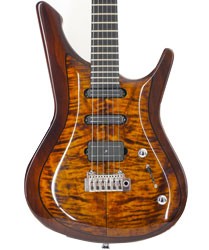
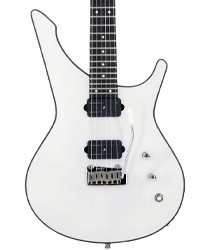
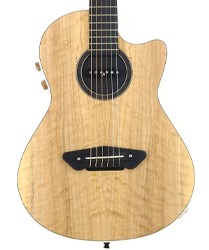
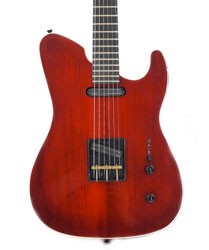
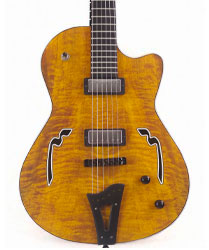

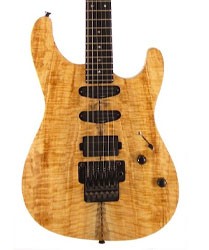

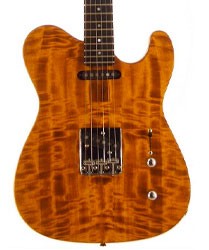
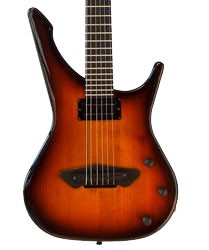
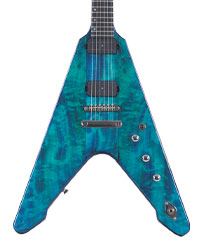

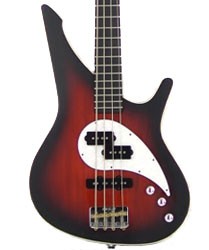
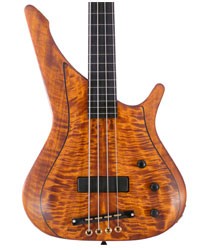

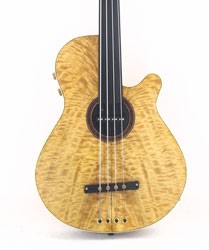
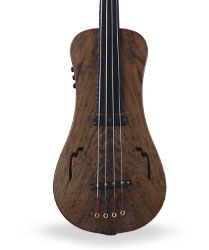

 Italiano
Italiano
